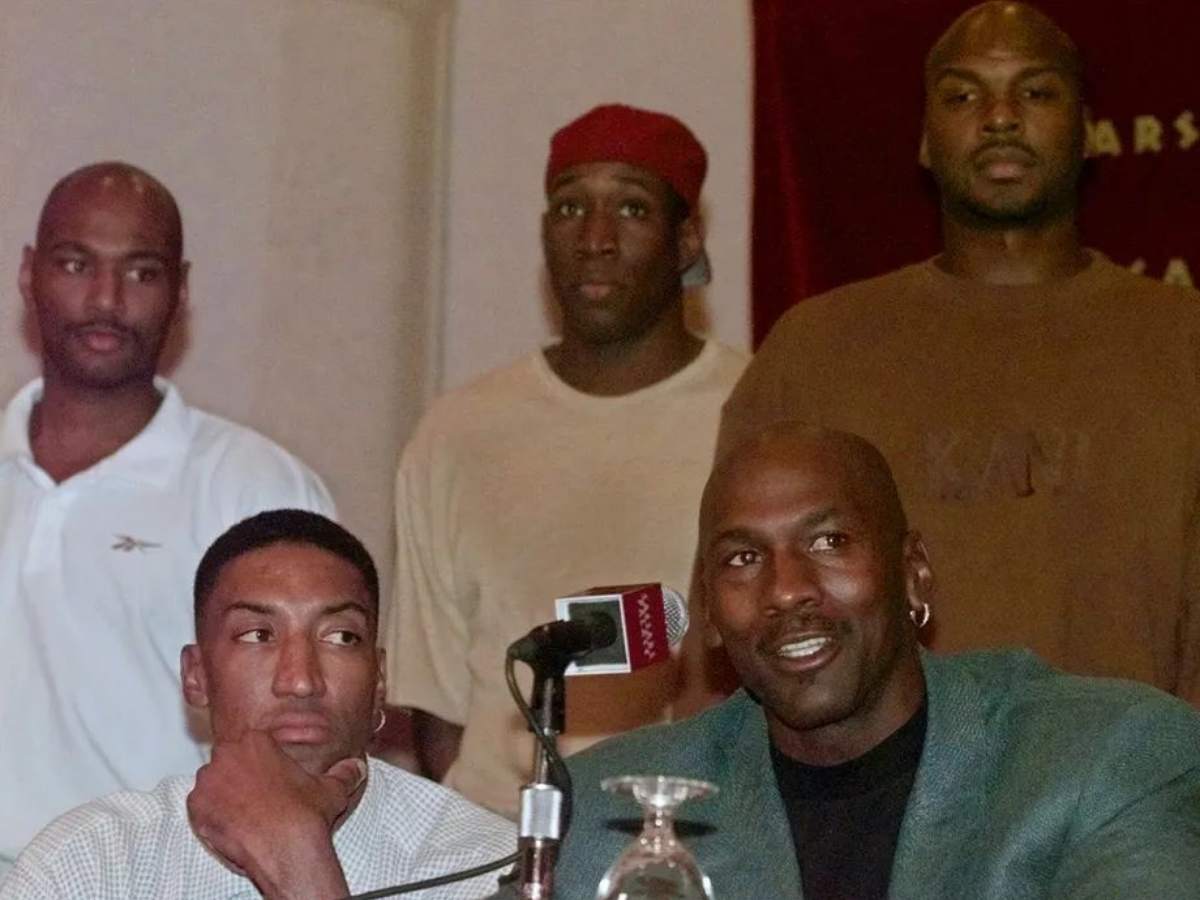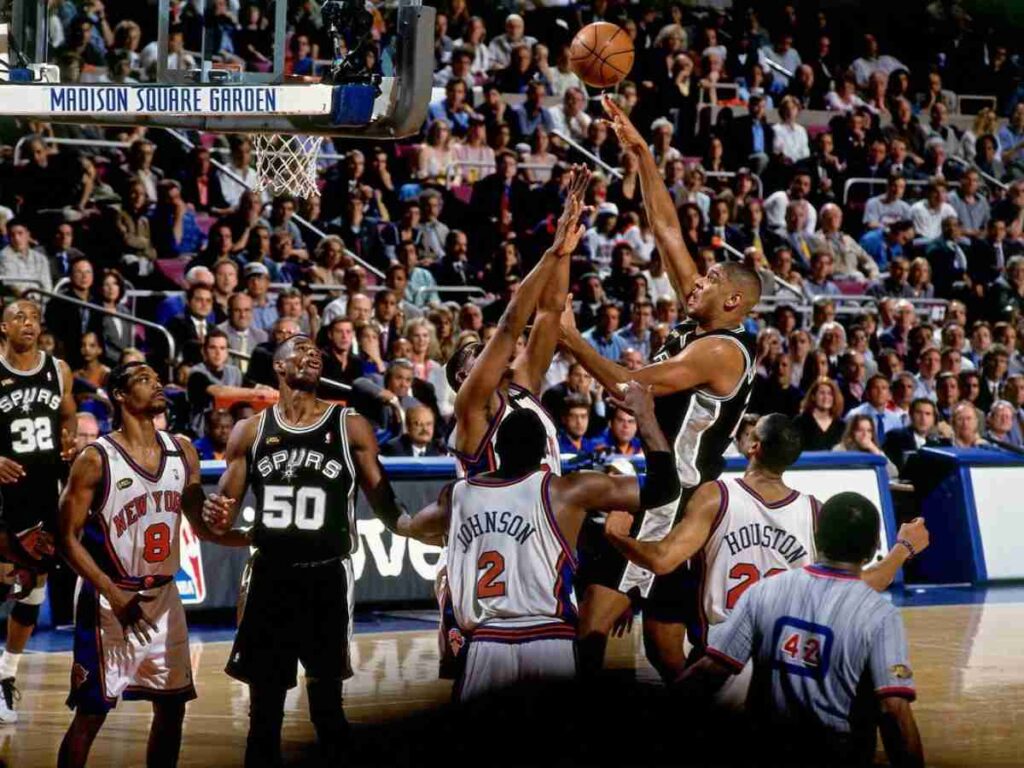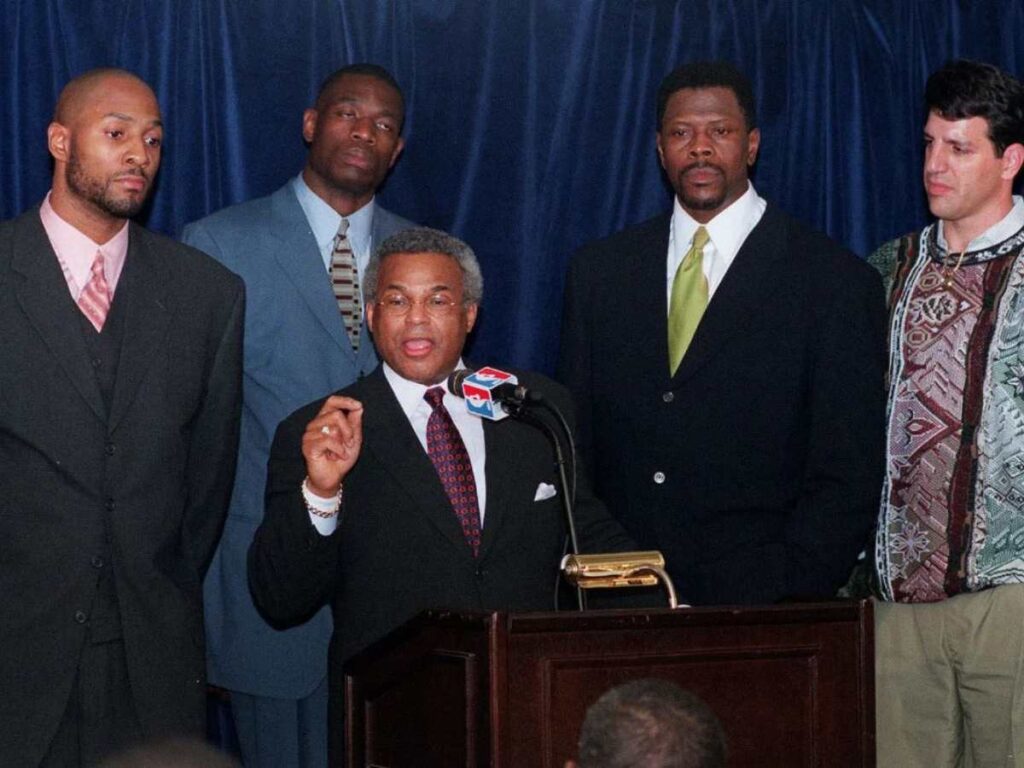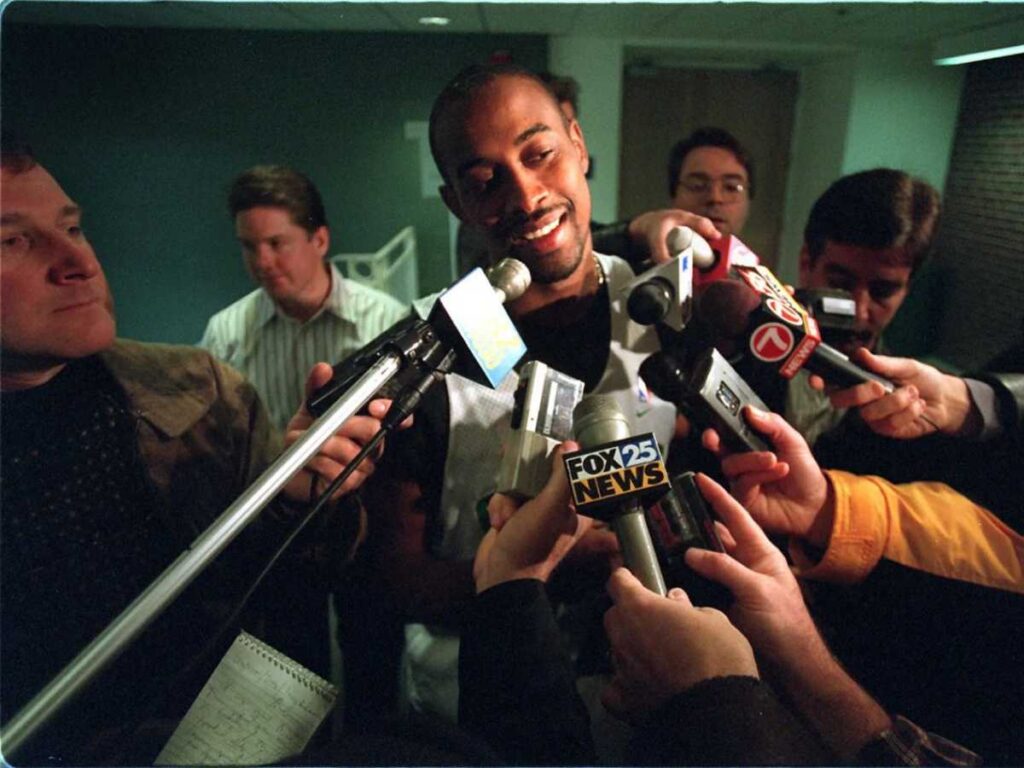What caused the 1999 NBA lockout? Who was to blame? Exploring the eerie landscape
Exploring the reasons behind the 1998-1999 NBA lockout.

🔍 Explore this post with:
In the National Basketball Association’s history, the NBA lockout of 1999 was an important occasion. It came about as a result of a disagreement over CBA negotiations between the league’s team owners and the players’ union. The players returned to work in early 1999 after a 191-day lockout that saw the season reduced to 50 games. In this article, we’ll examine the unsettling NBA season of 1998–1999 and make an effort to comprehend the reasons behind the lockout.
The Growing Tension between the NBA Owners and Players’ Union

The NBA had seen a significant growth in popularity in the 1990s, driven by the success of star players like Michael Jordan, Magic Johnson, and Larry Bird. The team owners in the league, however, were experiencing growing financial deficits and thought that the players’ salaries were the main culprit. The owners argued that the players’ excessive 57% ownership portion of basketball-related profits adversely impacted their profitability. The growing pattern of players leaving their organizations to sign lucrative contracts with other teams worried the team owners as well.
The players’ union, on the other hand, thought that the owners’ financial difficulties were not primarily due to the players’ salary. They claimed that the team owners were mismanaging them and spent excessive amounts of money on non-player expenses. Years of escalating friction between owners and the players’ union culminated in 1998 with the expiration of the previous collective bargaining agreement (CBA).
The Primary Cause: The Dispute over Collective Bargaining Agreement Negotiations

The expiration of the previous CBA in June 1998 triggered negotiations for a new agreement. From 57% to 50%, the owners wanted to cut the players’ portion of basketball-related revenue. They said that by doing so, the league would become more profitable, and teams would be less likely to splurge on player compensation. The players’ union opposed this idea and would not agree to a decrease in their earning share.
As negotiations progressed, the two sides became more entrenched in their positions. The players’ union threatened to go on strike if the NBA team owners did not agree to their demands for a new CBA, while the owners threatened to lock out the players if they did not. In the end, the lockout was put into effect, which caused the 1998–1999 NBA season to be postponed.
The Players’ Union vs. the Team Owners: Who Was to Blame for the Lockout?
The players’ union and team owners’, both parties bear the blame for the 1999 NBA lockout due to their refusal to make compromises during CBA negotiations, making it a complex factor. Owners of NBA teams claimed that their financial problems were primarily due to the players’ salaries, but the players’ union highlighted other causes. Both parties eventually achieved a compromise that benefited the league and the players.
However, the lockout produced a deadlock that lasted for over six months, which caused the season to be cut down to 50 games and games to be postponed. While team owners intended to lower player revenue sharing to increase profitability, the players’ union wanted to keep current 57% share of basketball-related revenue. The inability of both parties to come to an agreement irritated the crowd and the athletes.
The Eerie Landscape of the NBA Season: The Impact of the Lockout on Fans and Players

During the 1998–99 season, the NBA lockout hugely impacted both fans and players, resulting in an unsettling atmosphere throughout the league. The postponed games and the abbreviated season left disillusioned and irate spectators. The controversy, in the opinion of many supporters, was unwarranted and hurt the league’s credibility. The lockout also impacted players’ lives as they could not play the sport they loved and make a living. Financial issues plagued many athletes, and the lockout impacted their physical and mental health.
Players struggled to perform at their peak level due to the abbreviated season and compressed schedule, which increased their risk of injury and weariness. The ominous atmosphere of the NBA season during the lockout period brought to light the significance of the fans’ and players’ roles in the league and the necessity of cooperation and compromise to ensure the league’s success.
In the league’s history, the NBA lockout of 1999 was an important occasion. It came about as a result of a disagreement over negotiations for a collective bargaining agreement between the league’s team owners and the players’ union. During the 191-day lockout, the NBA fans faced an unsettling scene, and the season was cut down to 50 games. Ultimately, both parties reached an agreement that benefited the league and the players. The lockout was a timely reminder of the delicate balancing act between team owners’ and players’ interests, as well as the value of compromise in collective bargaining talks.
In case you missed:
“I can’t wait to touch down and start playing for the Taoyuan City Leopards” Fans perplexed as Dwight Howard unexpectedly announces joining Taiwan basketball league
“Ime Udoka traits” Knicks Coach Tim Thibodeau was also a ‘serial CHEATER’ during his youth days
Do follow us on Google News | Facebook | Instagram | Twitter

